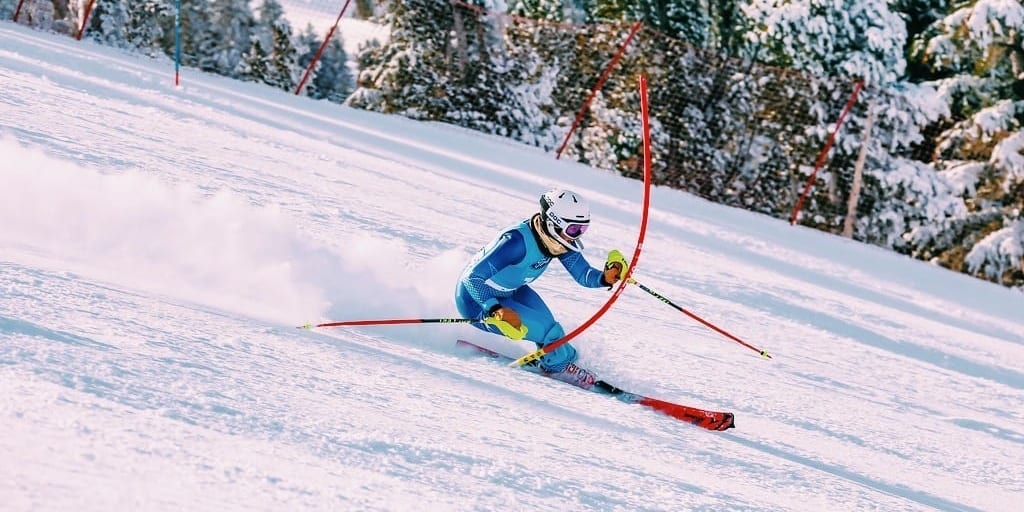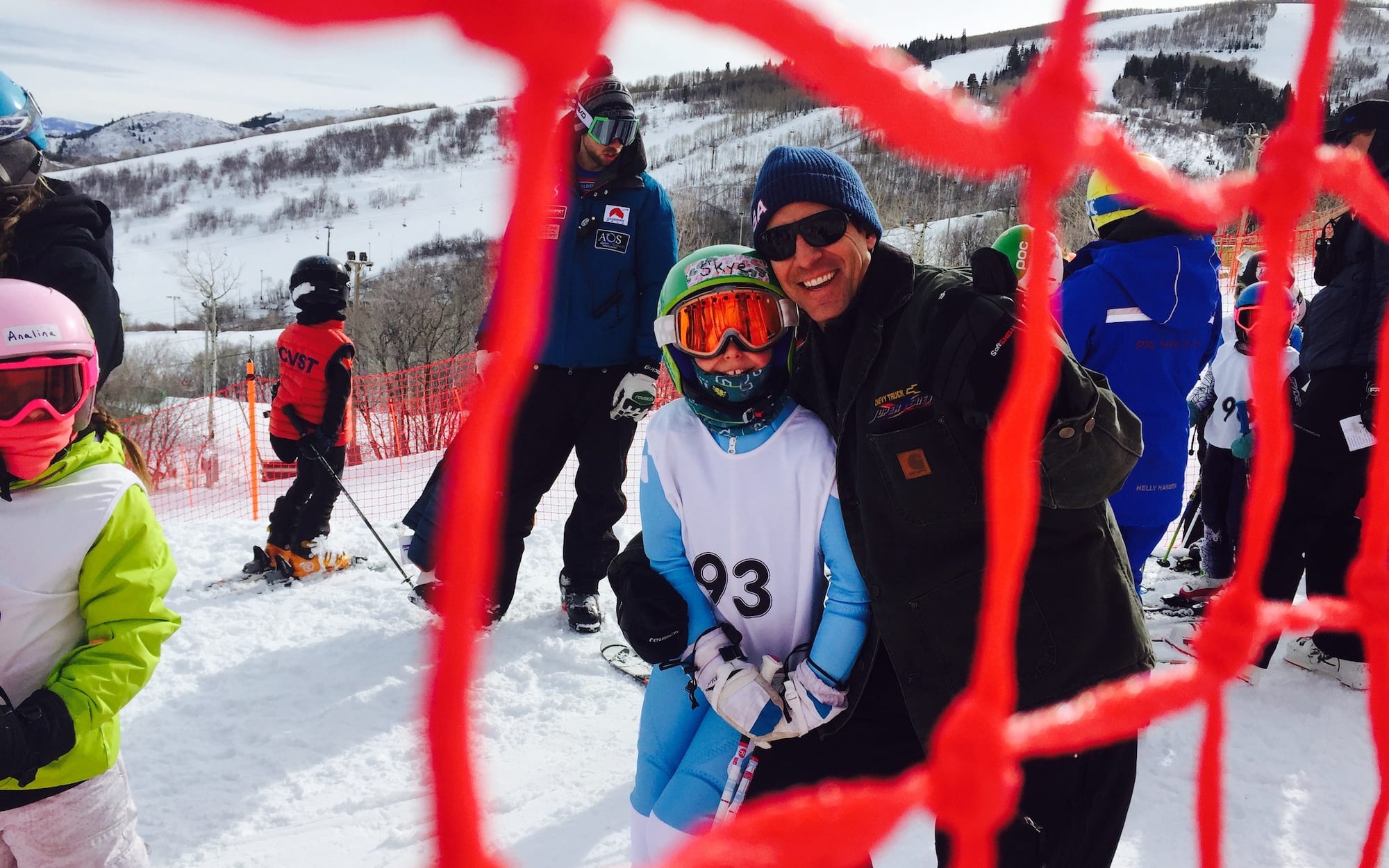Speed: Keeping Our Kids Safe
The beginning of this season was marred with tragedy as the ski racing community mourned the deaths of 35-year-old French World Cup skier David Poisson and 17-year-old German Max Burkhart, who were both killed only weeks apart while training and racing downhill in Canada.
Naturally, certain questions arise whenever such events occur. What went wrong? Could this have been avoided? How can we prevent this from ever happening again?
Although both Poisson and Burkhart died skiing downhill, the circumstances of their accidents are much different. Poisson caught an edge and went through the safety b-netting lining his training course in Nakiska and struck a tree, while Burkhart took the wrong line off of a jump in Lake Louise and crashed into the fixed a-netting, causing catastrophic injuries to his pelvis and lower body.
“According to eyewitnesses, (Burkhart) must have lost his bearings,” Alpine Canada’s Alpine Director Martin Rufener told Switzerland’s Blick. “At the first jump after the backup start, it is important to move to the left. 67 racers had mastered this task without any problems, but Burkhart jumped to the right and then crashed into the security fence at such an unfortunate angle that he cut it with his razor-sharp edges.”
B-net is the most common safety netting found in ski racing and is primarily designed to slow down rather than stop an athlete that has crashed into it. A-net, on the other hand, is a much denser material supported by permanent stanchions and cables designed to stop an athlete from entering a dangerous section adjacent to the hill. A-netting is typically only found on speed venues and other trails that have sharp turns where a direct impact to b-netting would be insufficient to protect an athlete.
Poisson and Burkhart’s deaths bring to light the two factors that are the most important when it comes to athlete safety during training and racing: how a venue is prepared with safety equipment and how athletes themselves are prepared to take on the demands of the day’s events.
After Burkhart’s death, the German Ski Federation announced changes detailing how German athletes will be allowed to enter international downhill competitions. In the future, in order for a German skier to be allowed to enter an international downhill, they must first participate in the training and education of the federation and then seek approval before they can compete.
With the Germans making changes in order to ensure their athletes are properly prepared for speed racing, what is happening in the United States in order to keep our athletes safe?
Zeke Davisson is the executive director of the Kelly Brush Foundation, which was founded after Brush was paralyzed following a crash where she struck an insufficiently protected lift tower during an NCAA competition in 2006. Since then, the foundation has been at the forefront of ski racing safety in the United States.
“Our position is nobody should suffer a serious injury striking a stationary obstacle,” Davisson says. “The expertise and equipment exist to prevent that. Period. Freak accidents will happen, people will hit their head, things will malfunction that you couldn’t anticipate, but at the end of the day, everybody needs to be cognizant of what the risks are and then be educated on how to mitigate and eliminate them.”
The foundation compiles and distributes on-hill safety information from equipment manufacturers to clubs across the country each year and they also provide grants to clubs who need financial assistance to purchase sufficient safety netting and equipment for their training and racing venues.
Davisson explains that when determining the quantity and type of equipment required for each individual hill, the foundation defers judgement to the recommendations of either the FIS or U.S Ski & Snowboard.
“We do rely a lot on FIS and U.S. Ski & Snowboard homologation reports,” says Davisson. “They all come with safety plans that are based on each individual hill; where the tree line is, how steep it is, is there a fall away, and what obstacles there are. It’s a plan that’s been objectively reviewed so we rely pretty heavily on that.”
“I don’t think any parent or program administrator would sit back and say, ‘We could see it being reasonable that somebody could hit that tree,’” he continues. “If you can protect against it, training or racing, we want to make it clear in this community that you need to.”
On race day, the FIS or U.S. Ski & Snowboard homologation report will provide guidelines for the location, type, and amount of safety equipment recommended for each individual hill. Ultimately, it is up to the technical delegate and the race jury to inspect and approve all aspects of the race hill including snow conditions and safety equipment and determine if a venue is safe or not.
When it comes to issues of athlete preparedness, the increased speed and pronounced terrain of downhill and super-G presents a much different challenge for athletes as fundamental skills like proper inspection and body position become critical to their success and safety on the hill.
In Burkhart’s case, with only race experience at two previous FIS downhill venues in Davos, Switzerland, and La Parva, Chile, the 17-year-old came to the Lake Louise NorAms and kicked out of the start on race day with only one training run, which he was disqualified in, due to a condensed schedule that cancelled the second training and was aimed at getting the maximum amount of races off that week.
Eric Garayoa is the athletic manager of the Squaw Valley Ski Team and a strong advocate for introducing athletes to elements of speed events at a young age. The Far West division and Squaw Valley has put on various speed camps for young athletes in the spring and summer for years that teach skills like proper technique, terrain management, and inspection skills.
Garayoa says that it’s important to introduce terrain and speed that is relevant to the age and ability level of each athlete. For instance, a U12 should not be taking on jumps or speed courses meant for a FIS-age athlete.

It’s important to keep in mind age and skill level when teaching speed skills. Image Credit: Squaw Valley Alpine Meadows
“When we do our speed camps here, we have different levels set up very specifically for different age classes and ability levels,” Garayoa says. “Young athletes will be spending a lot of time in rollers at slow speed trying to stay on the ground. The goal is to keep them on the ground and give them the proper tools for when they do go through the air.”
It isn’t lost on Garayoa that few clubs across the country have access to the types of terrain found at Squaw Valley that makes putting on such camps possible. For clubs that can’t build full-size terrain elements, it’s important to be mindful of what types of terrain their mountain already provides. Practicing proper body position and movements over small rollers at slow speeds could mean the difference between confidence and dangerous self-doubt when athletes are presented with real high-speed terrain for the first time.
“It’s having an open mind to what the mountain is actually presenting you so you don’t get stuck in a race arena,” he says. “You don’t have to build terrain specific to these things in order to teach speed skills.”
Proper inspection skills are in no way exclusive to the speed events, but proper visualization and line choice are critical when high speeds, blind turns, takeoffs, and landings are as prevalent as they are in downhill and super-G. Garayoa says that teaching a young athlete how to pick up on changes to a course is just as essential of a racing skill as how to properly carve a turn.
“It’s memorizing small elements in a way that puts small changes into a pattern in their mind,” says Garayoa. “You start with changing gates and then you can add terrain to that pattern and then more extreme terrain and body movement to that pattern so you’re always maximizing what a child is capable of and building off of it.”
“There’s such a huge premium placed on being a well-rounded ski racing athlete and that goes to teaching speed elements because they are relevant to tech and vice-versa,” he adds. “That doesn’t mean that they are going off of some huge air, it’s just being exposed to the elements and learning the fundamentals.”
U.S. Ski & Snowboard does put on periodical regional and national projects geared around exposing athletes to the techniques and tactics essential in the speed events. National Development Director Chip Knight explains that although there is no national curriculum based around downhill and super-G, each individual region has a strategy for teaching these skills and venues are chosen to optimize skill progression.
“It’s not a curriculum per se, but it’s regional projects and the design of the calendar that we give athletes more and more exposure to more demanding speed tracks,” says Knight. “At the national level, this U16 Copper project that we’ve done now for the last two years was part of that. Part of bringing our athletes into the Copper venue and getting them used to that hill and working on the basics of jumping, gliding, and terrain. That’s what we do that week with them.”
Although not a U.S. Ski & Snowboard regional or national project, the inaugural American Downhiller Camp in Mammoth Mountain, California, last spring was one such event that aimed to introduce young racers to the elements of speed.
“I think speed camps are really important because junior athletes don’t have the opportunity to train speed like World Cup or national team athletes do,” explains American Downhiller Alice McKennis. “It can be pretty challenging for them to just hop in their first super-G and never have done it; it can be really terrifying for them. Developing the fundamentals to deal with terrain and how to approach a jump and do it properly is key because they’re ultimately going to ski safer and have a better time because they won’t be scared of it.”
There’s no denying that speed events can be scary and also inherently dangerous. From World Cup skiers taking on the gnarliest tracks like Kitzbuehel’s Hahnenkamm, to a first-timer about to start their first FIS downhill, there will always be an element of danger. Even though that danger exists, it does not mean that catastrophe is ever a tolerable outcome. With proper safety equipment, education, and training, that danger can be minimized, if not avoided.






















